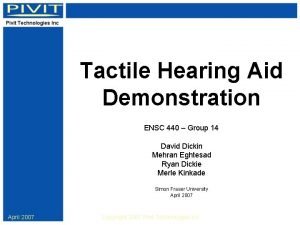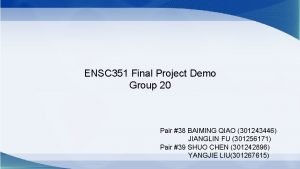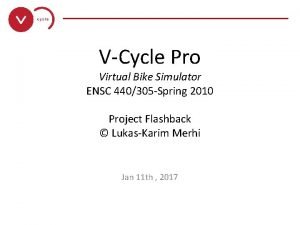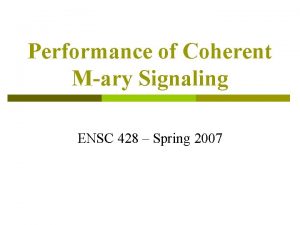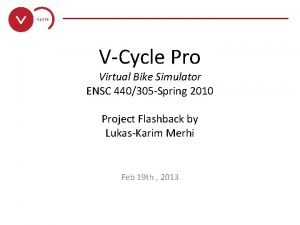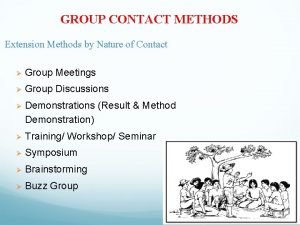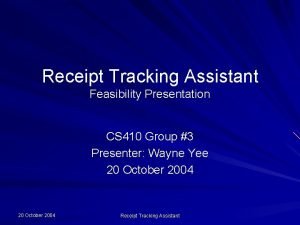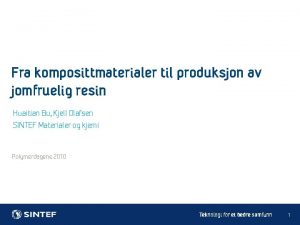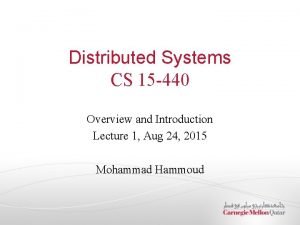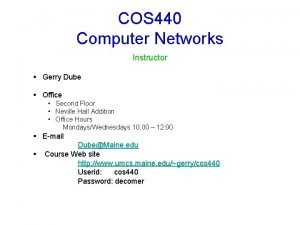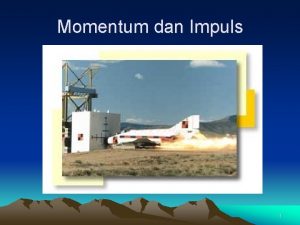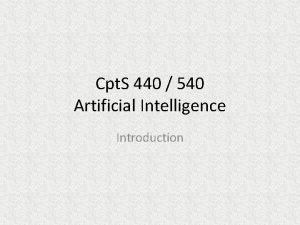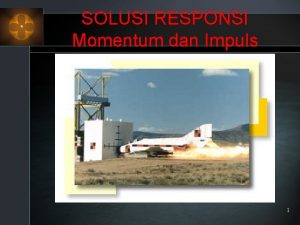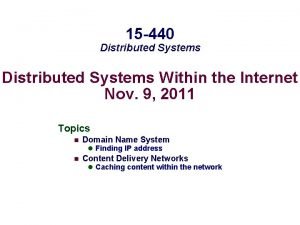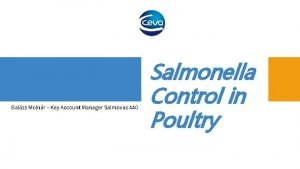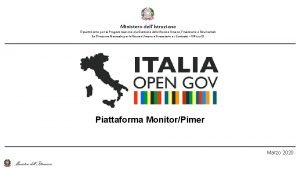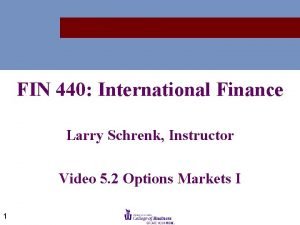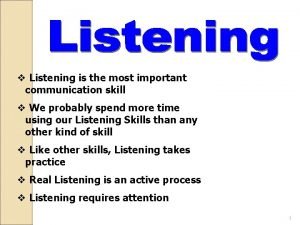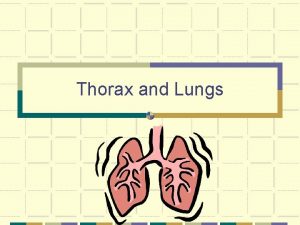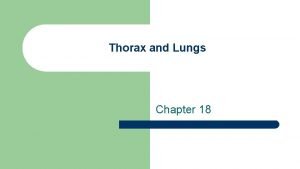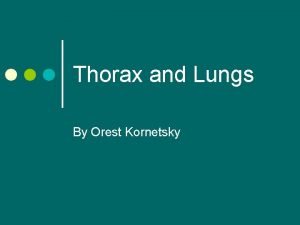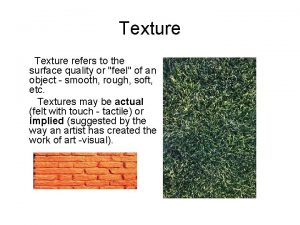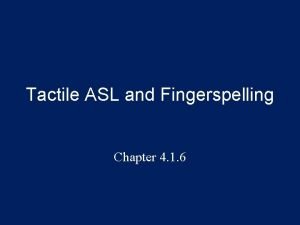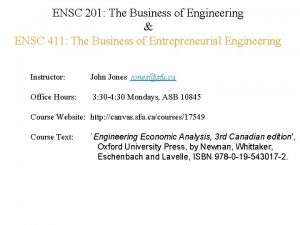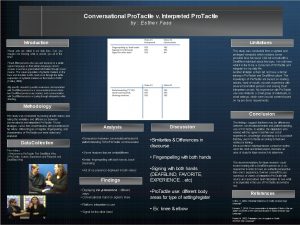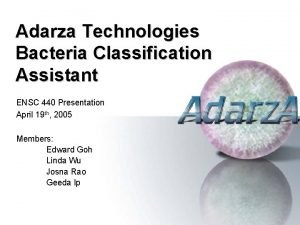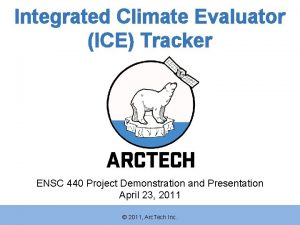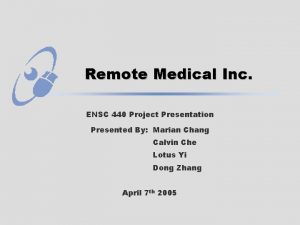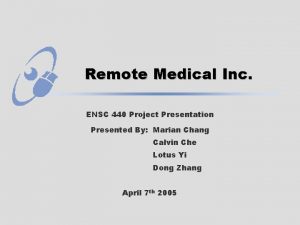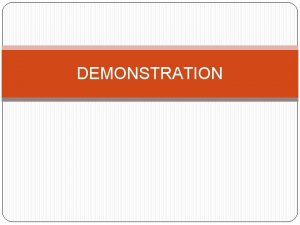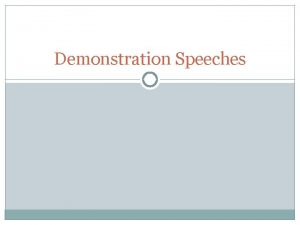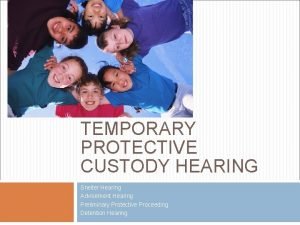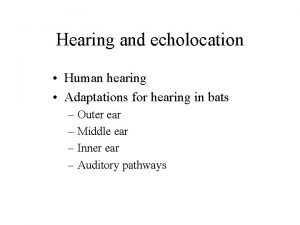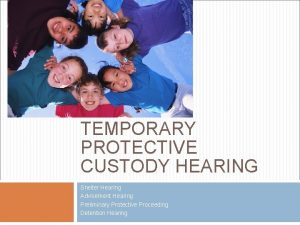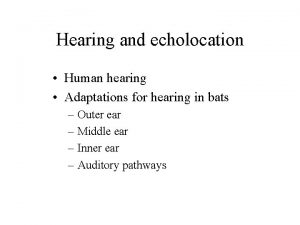Tactile Hearing Aid Demonstration ENSC 440 Group 14










































- Slides: 42

Tactile Hearing Aid Demonstration ENSC 440 – Group 14 David Dickin Mehran Eghtesad Ryan Dickie Merle Kinkade Simon Fraser University April 2007 Copyright 2007 Pivit Technologies Inc.

Outline § § § § April 2007 Introduction Software Subsystems Hardware Subsystems Business Case Experimental Results Conclusion Demonstration Copyright 2007 Pivit Technologies Inc. 2

Introduction April 2007 Copyright 2007 Pivit Technologies Inc.

Team Members § David Dickin – CEO § Mehran Eghtesad – Senior Hardware Designer § Ryan Dickie – Senior Software Designer § Merle Kinkade – CFO April 2007 Copyright 2007 Pivit Technologies Inc. 4

What is a Tactile Hearing Aid? § A device that translates noise into touch § Used to help the hearing impaired § Traditional hearing aids cannot be used by all people April 2007 Copyright 2007 Pivit Technologies Inc. 5

System Overview April 2007 Copyright 2007 Pivit Technologies Inc. 6

Subsystems April 2007 Copyright 2007 Pivit Technologies Inc. 7

Software Subsystems April 2007 Copyright 2007 Pivit Technologies Inc. 8

Technologies § Wav Reader/Writer: self-designed. § FFT: FFTW (Fastest Fourier Transform in the West) § Audio Input/Outer: Windows Multimedia Library § Parallel Port: Inpout 32. dll § Drawing: GDI § GUI : Winapi § Misc: Boost C++ libraries April 2007 Copyright 2007 Pivit Technologies Inc. 9

GUI User Interface April 2007 Copyright 2007 Pivit Technologies Inc. 10

Audio IO § § April 2007 Runs in separate threads 44100 Hz, 16 -bit, mono Can load/save to wav files Can use microphone input Copyright 2007 Pivit Technologies Inc. 11

DSP § § § April 2007 Hamming Windows R 2 C DFT with N = 4096 Threshold Filtering Critical Transform Bins Buzzer Amplitude Mapping Copyright 2007 Pivit Technologies Inc. 12

Parallel Port Interface § Runs in a separate thread § Updates in 1 ms intervals § Buzzer amplitude achieved by pulsing buzzers § Uses inpout 32. dll driver April 2007 Copyright 2007 Pivit Technologies Inc. 13

Hardware Subsystems April 2007 Copyright 2007 Pivit Technologies Inc. 14

I/O Control Board § PCB fabricated to drive vibrators § Connects software to Vibra. Pad § UI is on/off switch and intensity knob April 2007 Copyright 2007 Pivit Technologies Inc. 15

Vibra. Pad § Why 16 Vibrators? • Parallel port limitations • Space limitations • Power restrictions § Worn on stomach/torso area • Largest even surface area without contour issues • Large network of nerve endings § Velcro for repositioning and ease of array placement April 2007 Copyright 2007 Pivit Technologies Inc. 16

Proposed Mappings Unifor m Offset with Snaking April 2007 Offset with Snaking & Natural Copyright 2007 Pivit. Mapping Technologies Inc. 17

Transforms/Mapping § Critical Bands based on Frequency Response of Human Ear § Critical Band Mapping based on Bark Scale § Below 500 Hz Uniform bands of 100 Hz intervals § Above 500 Hz Bands increase nonuniformly with Frequency April 2007 Copyright 2007 Pivit Technologies Inc. 18

Bark Scale Divisions High resolution below 500 Hz Human voice ~500 Hz– 2 k. Hz Optimum range ~2 k. Hz– 4 k. Hz Resolution decreases Rapidly above 4 k. Hz April 2007 http: //ccrma. stanford. edu/~jos/bbt/Bark_Frequency_Scale. html Copyright 2007 Pivit Technologies Inc. 19

Business Case April 2007 Copyright 2007 Pivit Technologies Inc. 20

Budget and Funding April 2007 Copyright 2007 Pivit Technologies Inc. 21

Schedule April 2007 Copyright 2007 Pivit Technologies Inc. 22

Market Overview Statistics obtained from publications of the National Institute on Deafness and other Communication Disorders (NIDCD) based on the American population and published at http: //www. employmentincentives. com/state_incentives/documents/statistics_about_hearing_loss. doc. April 2007 Copyright 2007 Pivit Technologies Inc. 23

Experimental Results April 2007 Copyright 2007 Pivit Technologies Inc. 24

Goals “The purpose of this project is to determine the extent and limitations of the tactile sensory system to receive and translate sound information. Such measures will be quantified by outlining specific test procedures and conducting these tests on several individuals. ” Project Proposal Criteria for Success “To deem a series of experiments successful, a minimum hit rate of 80% must be achieved after a maximum of 100 minutes of cumulative training, or 5 iterations of the above experiment. ” Design Specifications April 2007 Copyright 2007 Pivit Technologies Inc. 25

Experiment 1 Procedure § 10 short sound clips • Sirens, bells, animals, vehicles, etc. § Subjects allowed to hear sounds § Training time • • One by one with audio: open ended One by one without audio: open ended Random: max 10 minutes Operator-assisted training: max 10 minutes § Two set of Transforms April 2007 Copyright 2007 Pivit Technologies Inc. 26

Transforms Buzzer § Transform 1: • Frequency bins determined based on critical bands § Transform 2: • Frequency bins divided equally in log scale April 2007 Frequency Range (Hz) Transform 1 Transform 2 1 0 -200 50 -74 2 201 -400 75 -107 3 401 -630 108 -157 4 631 -770 158 -230 5 771 -920 231 -336 6 921 -1080 337 -491 7 1081 -1270 492 -719 8 1271 -1480 720 -1052 9 1481 -1720 1053 -1540 10 1721 -2000 1541 -2253 11 2001 -2320 2254 -3296 12 2321 -2700 3297 -4822 13 2701 -3150 4823 -7056 14 3151 -3700 7057 -10325 15 3701 -4400 10326 -15105 16 4401 -15500 15106 -22100 Copyright 2007 Pivit Technologies Inc. 27

Experiment 1 Results Conducted on 4 people § Transform 1: • Average Hit rate: 95% • Average Training time: 20 min • PASS § Transform 2: • Average Hit rate: 100% • Average Training time: 16 min • PASS TOO EASY? April 2007 Copyright 2007 Pivit Technologies Inc. 28

Experiment 2 Procedure Changes from Experiment 1 § 30 short sound clips § Normalize length of clips (3 -4 sec) § Subject not allowed to hear sounds April 2007 Copyright 2007 Pivit Technologies Inc. 29

Experiment 2 Results Conducted on 4 people § Transform 1: • Average Hit rate: 55% • Average Training time: 43 min • FAIL § Transform 2: • Average Hit rate: 53% • Average Training time: 35 min • FAIL TOO HARD? April 2007 Copyright 2007 Pivit Technologies Inc. 30

Redesign Changes § Based on user feedback and comments as well as our personal observations § Create Transform 3: compromise of uniform and critical band § Change Vibra. Pad layout § Change different intensity levels (PWM) April 2007 Copyright 2007 Pivit Technologies Inc. 31

Vibrator Layout Experiment 1/2 Layout April 2007 Experiment 3 Layout Copyright 2007 Pivit Technologies Inc. 32

Experiment 3 Procedure § Large scale test (20+ subjects) § 10 short sound clips of the same length • Sirens, bells, alarms, cars, etc. § Limited training time • Self directed: 7 minutes • Operator-assisted: 7 minutes § Provide a list of sound names to subjects § Using transform 3 April 2007 Copyright 2007 Pivit Technologies Inc. 33

Experiment 3 Results Conducted on 23 individuals § Average hit rate: 68% § Average training time: 17. 5 min April 2007 Copyright 2007 Pivit Technologies Inc. 34

Experiment 3 Results § Previous exposure • Our group: 97. 5% • Everyone else: 61% § Age • 16 Individuals under 35: 77% • 7 individuals over 35: 44% April 2007 Copyright 2007 Pivit Technologies Inc. 35

Conclusion April 2007 Copyright 2007 Pivit Technologies Inc. 36

Summary § Participants are able to identify sounds with practice § High pitched sounds, like alarms, are easy to distinguish § More testing required, but has some marketability § Project stayed on schedule and budget April 2007 Copyright 2007 Pivit Technologies Inc. 37

Acknowledgements § Thanks to the ESSEF and the Wighton Fund for funding for our project § Thanks to the ENSC 440/305 Professors and TA’s for their time and assistance April 2007 Copyright 2007 Pivit Technologies Inc. 38

Questions? Go Canucks! April 2007 Copyright 2007 Pivit Technologies Inc. 39

Similar Devices § Audiotact § Tacticon § Tactaid April 2007 Copyright 2007 Pivit Technologies Inc. 40

Bark Scale Divisions April 2007 http: //ccrma. stanford. edu/~jos/bbt/Bark_Frequency_Scale. html Copyright 2007 Pivit Technologies Inc. 41

Standards § § § April 2007 Standards Council of Canada CSA ANSI ISO FCC ECMA Copyright 2007 Pivit Technologies Inc. 42
 Ensc 440
Ensc 440 Ensc 440
Ensc 440 Hoglund brain imaging center
Hoglund brain imaging center Noah hearing aid
Noah hearing aid Snaps
Snaps Count the dot audiogram
Count the dot audiogram Flyte hearing aid reviews
Flyte hearing aid reviews Ensc 351
Ensc 351 Ensc platform
Ensc platform Ensc 428
Ensc 428 440305
440305 Group contact methods
Group contact methods First aid merit badge first aid kit
First aid merit badge first aid kit St andrew medical centre
St andrew medical centre Area code 440 location
Area code 440 location Komposittmaterialer
Komposittmaterialer 15-440
15-440 Gerry dube
Gerry dube Xenotest 440
Xenotest 440 Ukuran mudah sukarnya suatu benda untuk berputar disebut
Ukuran mudah sukarnya suatu benda untuk berputar disebut 25-3/440
25-3/440 Xavier mail delivery robot
Xavier mail delivery robot Bola dengan massa 0 440 kg yang bergerak ke timur
Bola dengan massa 0 440 kg yang bergerak ke timur 15-440 cmu
15-440 cmu Frm handbook
Frm handbook Salmovac 440
Salmovac 440 Section 17-4 patterns of evolution pages 435-440 answers
Section 17-4 patterns of evolution pages 435-440 answers Pimer monitor 440
Pimer monitor 440 Fin 440
Fin 440 Meris 440 review
Meris 440 review An example of a mutual aid or reciprocal group is
An example of a mutual aid or reciprocal group is Types of reflective listening
Types of reflective listening Importance of listening skills
Importance of listening skills Axillar line
Axillar line Tactile learner study tips
Tactile learner study tips Thoracic cage configuration
Thoracic cage configuration Tactile fremitus increased
Tactile fremitus increased Vocal fremitus
Vocal fremitus Why is tactile fremitus increased in pneumonia
Why is tactile fremitus increased in pneumonia Listening vs hearing
Listening vs hearing It refers to the surface quality
It refers to the surface quality Nichole atkins
Nichole atkins Tactile asl
Tactile asl
